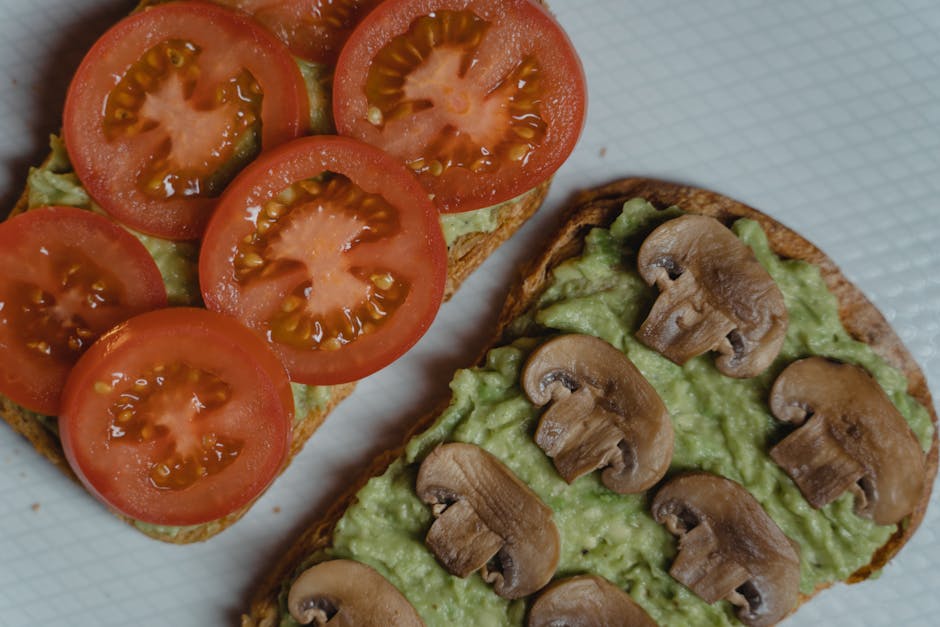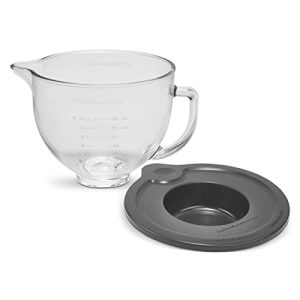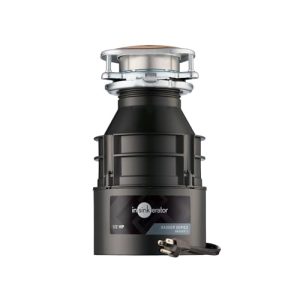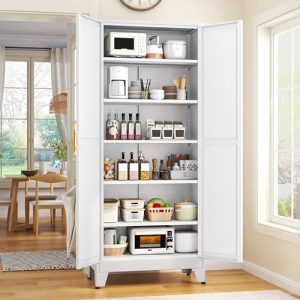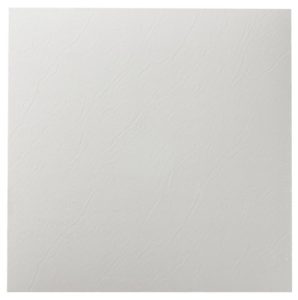Is your kitchen a messy disaster, and you don’t have a dishwasher to help? You’re not alone, and the good news is you can still get your kitchen spotless without one.
Imagine walking into a clean, organized space where everything shines and your stress melts away. You’ll discover simple, effective steps to tackle that mess quickly and easily. Ready to transform your kitchen and feel proud of your space again? Let’s dive in and make cleaning your kitchen something you can actually enjoy.
Gather Essential Supplies
Gathering essential supplies sets the foundation for cleaning a messy kitchen without a dishwasher. Having the right tools and cleaning agents ready makes the process smoother and faster. Preparation reduces stress and helps maintain focus on each task.
Choose The Right Cleaning Tools
Select tools that fit your kitchen’s needs. A sturdy sponge or scrub brush tackles stuck-on food easily. Microfiber cloths work well for wiping counters and surfaces without leaving streaks.
- Rubber gloves protect your hands from hot water and chemicals.
- A basin or large bowl holds soapy water for washing dishes by hand.
- A drying rack or clean towels help air dry dishes safely.
- A trash bag or bin keeps waste organized and off the floor.
Select Effective Cleaning Agents
Choose cleaning agents that clean well and are safe for kitchen use. Dish soap cuts through grease and removes food residue effectively. Baking soda works as a gentle scrub for tough stains and odors.
- White vinegar serves as a natural disinfectant and deodorizer.
- All-purpose kitchen cleaner tackles counters and appliance surfaces.
- Glass cleaner helps make shiny surfaces spotless and streak-free.
Clear And Organize Surfaces
Clearing and organizing your kitchen surfaces is a crucial step to tackle a messy kitchen without a dishwasher. A cluttered countertop not only makes cleaning harder but also slows down your cooking process. By creating a clean, organized workspace, you set the stage for a smoother, more efficient kitchen routine.
Remove Clutter And Trash
Start by scanning your countertops for any items that don’t belong or are no longer needed. Toss out old food wrappers, empty containers, and any trash hiding in plain sight. Clearing these away immediately frees up valuable space and prevents distractions while you clean.
Next, gather items like mail, keys, or random papers and relocate them to their proper spots. If you notice things that frequently clutter your counters, consider creating a designated area or container for them. This small change can keep your surfaces clear longer and make your kitchen feel less chaotic.
Sort Dishes And Utensils
Without a dishwasher, managing dirty dishes can feel overwhelming. Sort your dishes by type—plates, bowls, cups, and utensils—before washing. This approach speeds up the cleaning process and helps you stay organized.
Place utensils in a separate container or cup to avoid mixing them with larger items. Stack plates and bowls neatly in small piles to save space and prevent breakage. Have you tried setting up a mini washing station with a basin and drying rack? It makes handwashing dishes more manageable and keeps your counters tidy.
Hand Wash Dishes Efficiently
Cleaning a messy kitchen without a dishwasher can be daunting. But with the right techniques, it becomes manageable. Hand washing dishes efficiently saves time and effort. It also ensures that your kitchen stays neat and organized. Let’s explore some effective methods.
Soak Stubborn Items
Start with soaking dishes with tough stains or stuck-on food. Fill the sink with warm water and add a few drops of dish soap. Let stubborn items soak for at least 15 minutes. This softens the residue, making it easier to clean later.
Use Proper Washing Techniques
Begin with the least dirty dishes, like glasses and cups. Use a sponge or dishcloth for scrubbing. Apply gentle pressure to remove food particles. Wash plates and utensils next. Use a brush for tricky spots. Change the water if it gets too dirty.
Rinse And Dry Effectively
Rinse each item thoroughly under running water. Ensure no soap remains on the dishes. Place rinsed items in a drying rack. Use a clean towel to dry them if needed. This prevents water spots and keeps your dishes sparkling.
Clean Kitchen Appliances
Cleaning kitchen appliances without a dishwasher can feel overwhelming, but focusing on key areas makes the task manageable. Appliances like the microwave, stove, fridge, and countertops often collect grease and crumbs that dull your kitchen’s overall look. Keeping these clean not only improves hygiene but also extends the life of your appliances.
Wipe Down Microwave And Stove
Start by removing any loose food particles inside the microwave. Use a damp cloth with a little dish soap to wipe down the interior walls and ceiling. Don’t forget the turntable—take it out and wash it separately to avoid buildup.
The stove needs regular attention, especially around the burners and knobs where grease tends to gather. Use a gentle scrub brush or sponge with warm soapy water to clean these areas. If there’s stubborn grime, a paste of baking soda and water can work wonders without harsh chemicals.
Maintain Fridge And Countertops
Open your fridge and check for expired items. Wipe down shelves and drawers with a mixture of water and vinegar to remove spills and odors. Keeping the fridge clean prevents unpleasant smells and keeps your food fresher longer.
Countertops often get overlooked but cleaning them daily saves time in the long run. Use a multi-surface cleaner suitable for your countertop material and a microfiber cloth. Quick, frequent wipe-downs stop crumbs and spills from turning into tough stains.
Tackle Floors And Trash
Cleaning a messy kitchen without a dishwasher can feel overwhelming. Floors and trash often get ignored but are key to a fresh kitchen. Tackling these areas first makes the whole space feel cleaner fast. Focus on sweeping, mopping, and clearing out trash bins. This creates a good base for the rest of your cleaning.
Sweep And Mop Floors
Start by sweeping the kitchen floor to remove crumbs and dirt. Use a broom or vacuum to reach under cabinets and corners. Pick up all debris to prevent sticky spots later. Next, mop the floor with warm water and a mild cleaner. This removes stains and spills that sweeping misses. Let the floor dry completely to avoid slips and keep it shiny.
Empty And Sanitize Trash Bins
Take out all trash from bins and replace liners. Check for leaks or spills inside the bin. Wash the bin with soap and hot water to kill germs. Use a disinfectant spray for extra cleanliness. Dry the bin well before putting in a new liner. Clean bins stop bad smells and keep your kitchen healthy.
Establish Daily Cleaning Habits
Keeping a messy kitchen clean without a dishwasher requires simple daily habits. Small efforts each day stop dirt and clutter from building up. Consistent cleaning saves time and stress later. Set easy routines that fit your schedule and stick to them. Clean as you go during cooking to reduce mess. These daily habits keep your kitchen fresh and manageable.
Set A Cleaning Schedule
Plan specific times to clean your kitchen daily. Choose moments like after meals or before bed. Break tasks into small parts for easier handling.
- Wipe counters and stove after cooking
- Wash dishes by hand promptly
- Sweep or mop the floor if needed
- Clear out trash regularly
Use reminders or alarms to help keep your schedule. A consistent routine makes cleaning less tiring and more natural.
Prevent Future Messes
Stop messes before they start with smart habits. Clean tools and surfaces right after use. Put items back where they belong immediately. Use containers and organizers to keep things tidy.
- Wash utensils while waiting for food to cook
- Use a cutting board to protect counters
- Store ingredients in clear jars or boxes
- Keep a small trash bowl for scraps during prep
These steps reduce clutter and make cleaning easier. A neat kitchen feels calm and inviting every day.
Frequently Asked Questions
How Can I Clean Dishes Without A Dishwasher?
Start by soaking dishes in warm, soapy water to loosen grime. Use a scrub brush or sponge to clean each item thoroughly. Rinse with hot water and dry with a clean towel or air dry. This method saves time and ensures cleanliness.
What Are The Best Tools For Washing Dishes By Hand?
Use a good-quality sponge, scrub brush, and dish soap. A drying rack or clean towel helps with drying. Gloves protect your hands from hot water and detergents. These tools make hand washing efficient and hygienic.
How Do I Organize A Messy Kitchen For Cleaning?
Clear countertops and put away clutter. Group similar items together for easier access. Clean surfaces with a multi-purpose cleaner. Organizing first makes the cleaning process faster and more effective.
Can I Save Water While Cleaning Dishes By Hand?
Yes, fill one basin with soapy water for washing and another with clean water for rinsing. Avoid running the tap continuously. This method conserves water and reduces utility bills.
Conclusion
Cleaning a messy kitchen without a dishwasher takes time and effort. Start by sorting dishes and clearing counters. Use warm water and soap for better results. Wash items in small groups to stay organized. Dry and put away dishes quickly to avoid clutter.
Keep cleaning tools nearby for easy access. Regular cleaning keeps your kitchen fresh and tidy. Small steps make big differences over time. A clean kitchen feels welcoming and safe to cook in. Try these simple tips to keep your kitchen neat every day.

Sophie Hartwell is the founder of KitchenQuik.com, where she shares kitchen tips, smart cooking hacks, and the best product picks to make everyday cooking easier and more enjoyable.
